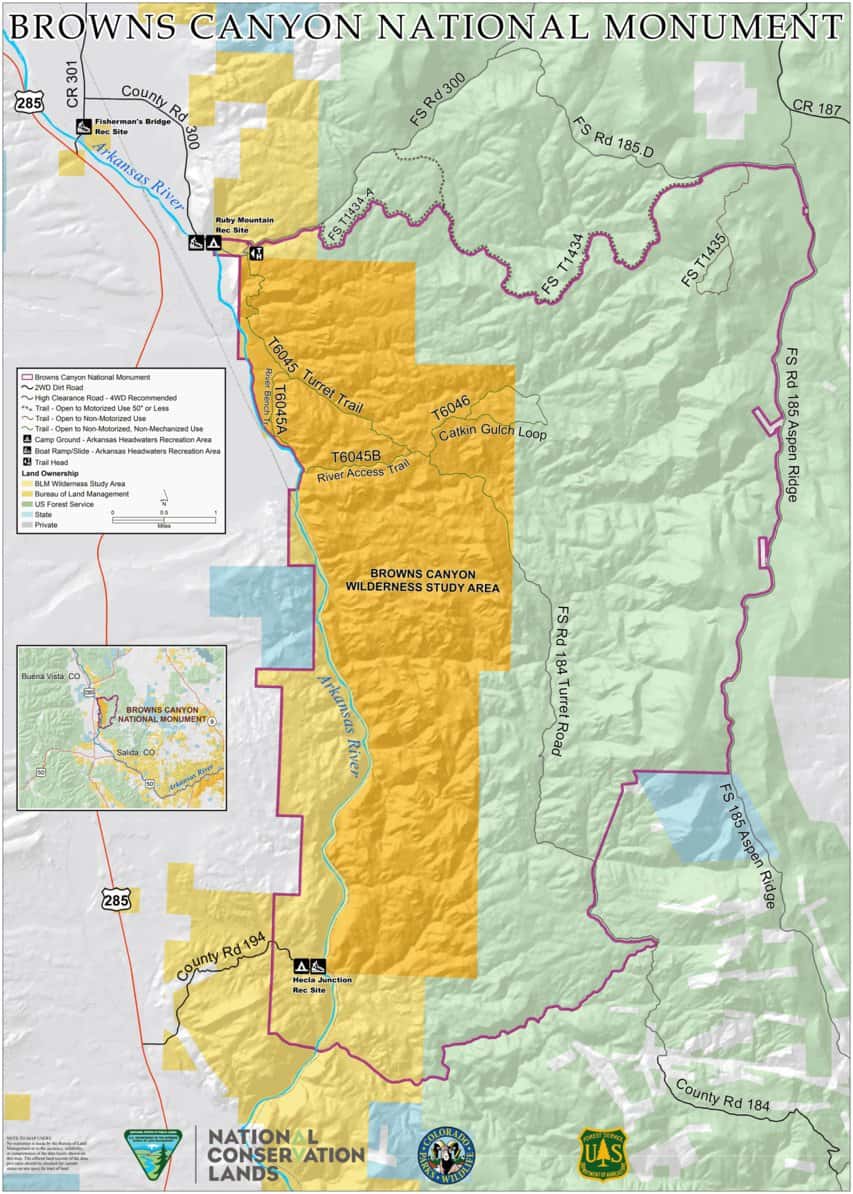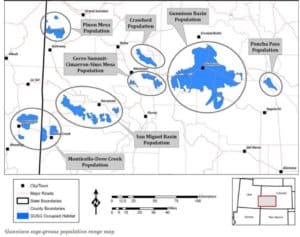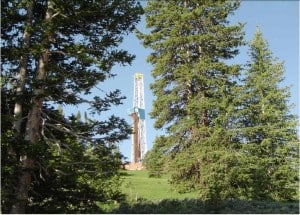
I received an email from the Colorado Mountain Club this morning asking me to weigh in via public comments on the Brown’s Canyon management plan, which is joint between the BLM and the Forest Service. The Sustainable Alternative is interesting from the “how local collaborative work should be considered” perspective, and also “what people disagree about when there is no oil and gas nor fuel treatments, and grazing is off the table based on the legislation.” This is the message from CMC about what our comments should say.
Main messaging:
The Sustainable Alternative was developed through a collaborative process by a group of over 20 local Chaffee-county based citizens and organizations who represent decades of use and close observation of the area now designated as Browns Canyon National Monument. The Sustainable Alternative has broad community support from over 100 local businesses, residents, and decisionmakers, as well as various regional and national organizations. The Sustainable Alternative also has local government support, including the City of Salida, the Town of Buena Vista, Chaffee County Commissioners, and the Town of Turret.
The development of the Sustainable Alternative was very intentional in prioritizing the protection of Monument resources, objects, and values, while balancing increased need for recreational access and conservation. The vast community support signifies the balanced and reasonable approach put forth. The Sustainable Alternative seeks to ensure the Monument is protected for generations to come. We believe local residents, businesses, and cities should have a voice in creating reasonable management for Browns Canyon National Monument – we are asking the Bureau of Land Management and the US Forest Service to adopt recommendations put forth in the Sustainable Alternative, rather than a top-down from political voices in Washington, DC.
OK then, but I don’t think that those are the only two alternatives. From the text of the Sustainable Alternative:
In general, the BLM and USFS, in collaboration with cooperating agencies, should provide enough professional staff and law enforcement officers to ensure compliance with BCNM regulations and pertinent laws. The monument should be managed to accommodate current and future uses. Most importantly, the agencies should be careful not to invite more activity than can be sustainably managed, such as by providing maintenance-intensive infrastructure, developments requiring frequent staff patrolling, and by undertaking high-visibility programs to promote visitation to the Monument.
It does seem like folks pursue a Monument designation hoping to get more management bucks. Then they are many times disappointed by not getting more bucks, and also having more visitation due to the enhanced visibility. This could lead ultimately to a net loss in funding per visitor. But has anyone ever seen the BLM or FS spending money to promote visitation to a spot? It seems to me that that is usually the role taken by local businesses and governments, whom I’m guessing are not going to do that, given what they say in these comments.
They also suggest that it’s more efficient for the PSICC to do the monument plan under the 2012 Rule than to do an amendment regarding this piece of land. It’s hard for me to agree that it would be either efficient or particularly straightforward.
As an alternative approach and as previously stated in Friends of Browns Canyon and The Wilderness Society’s comments on the Planning Assessment, submitted in September 2018, it is much more efficient and straightforward to develop the monument management plan under the USFS 2012 planning regulation rather than trying to stitch 2012 rule amendments into a 1982 rule plan.
So I read on and in the Sustainable Alternative there were some surprising (to me) thoughts about roadless:
Similar to recent Federal legislative initiatives to release on WSAs, there are currently state-based pressures to remove roadless area protections. For example, Utah Governor Herbert recently petitioned the U.S. Department of Agriculture to revoke and rewrite the national Roadless Rule as applied to The Aspen Ridge Roadless Area provides a uniquely undamaged landscape with wilderness qualities. Utah’s forests to open these lands to development. (See https://governor.utah.gov/2019/03/01/utah-submits-request-to-the-department-of-agriculture-regarding-federal-land-maintenance and https://ourforests.utah.gov/wp-content/uploads/2019/02/UtahRoadlessRulePetition_28Feb2019.pdf.) In light of these known and anticipated pressures, as well as the need for clear management prescriptions to be outlined in the RMP for future agency officials, it is important for the USFS to consider proactive management to preserve the wilderness character of the lands within the Aspen Ridge Roadless Area, such as those suggested in the following recommendations.
2. Recommendations
• The USFS should use the current planning process as an opportunity to recommend wilderness for the entirety of Aspen Ridge Roadless Area within the monument.
• The USFS should include language in the RMP, providing commitment to manage the Aspen Ridge Roadless Area under the same protections even if the roadless area designation were to be removed.
Holy Smoke! The folks who wrote this either didn’t know that the FS and Colorado had spent a great deal of in developing our own State Roadless Rule and that that is currently the law of the land in Colorado, or are generally promoting Utah-phobia just for the heckuvit.
Anyway, I did think that the BLM’s use of the “online story map” was interesting, and the webinar. The webinar seems like a great idea so many people can easily participate. Maybe FS plans have something similar, but I have not been keeping up. Check it out!


